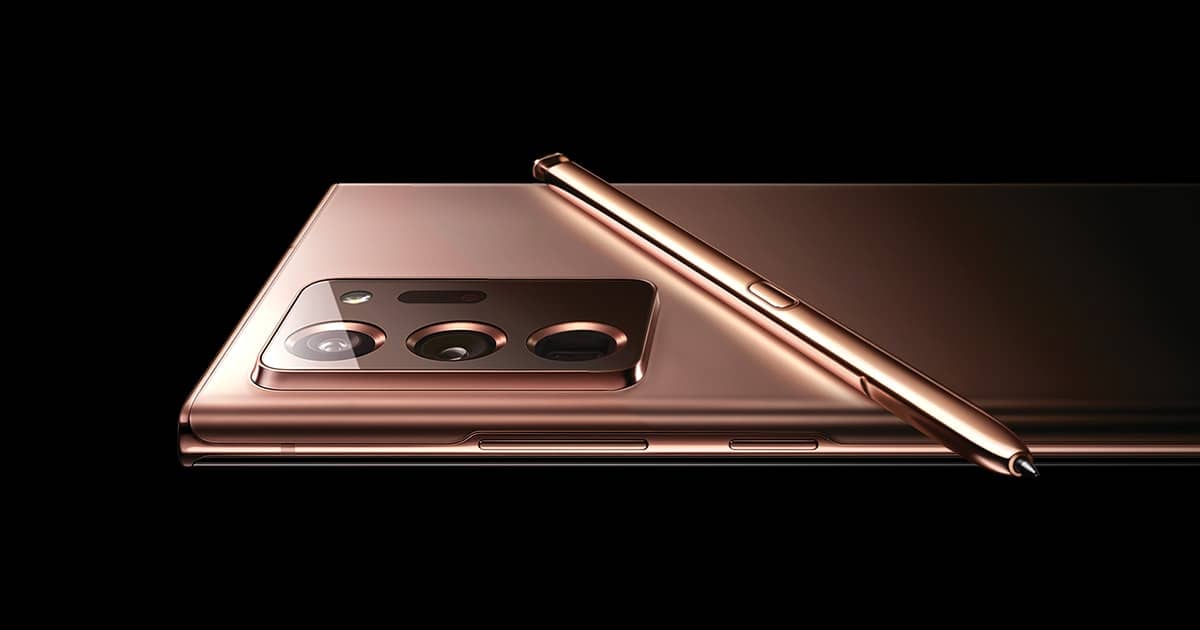The Samsung Galaxy Note 20 Ultra 5G is the last Note series smartphone as Samsung head of mobile experience Roh Tae-moon declared in an interview. The latest version of Samsung’s pen phablet is designed to impress buyers with top-of-the-line technology, but it also costs accordingly. We will deep-dive in this big smartphone’s specs in every aspect.
We categorized every aspect of the phone and gave a star rating based on general price/ performance of the phone.
Current Best Price on Amazon: $875.00
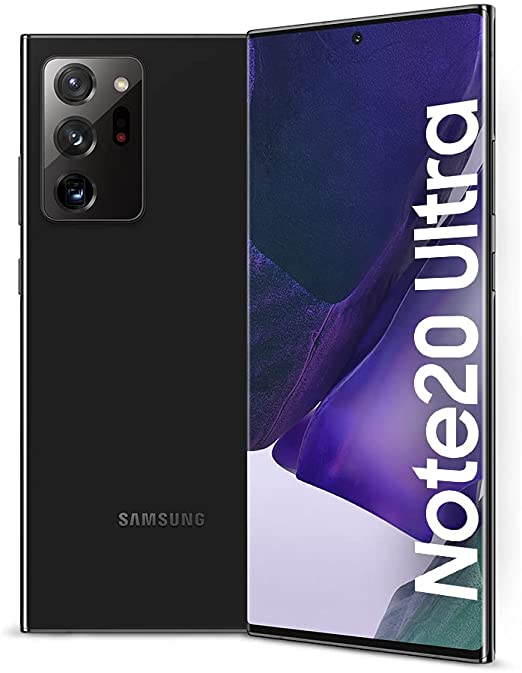
Samsung Galaxy Note 20 Ultra: Pros and Cons
Pros
- High speed
- Big, bright, sharp display
- 120 hertz optional
- Strong zoom
- Laser auto focus
- Integrated stylus
- Waterproof
- Wirelessly chargeable
- Expandable memory + Dual SIM
- 5G
Cons
- Slippery back
- thick camera
- No jack socket
Samsung Galaxy Note 20 Ultra: Design
Samsung Galaxy Note 20 Ultra: Our Rating for Design 8.1/10
In contrast to the S20 models, the Samsung Galaxy Note 20 Ultra is a bit bulkier. The almost monolithic design is explained by the fact that the manufacturer has to accommodate the iconic S-Pen, the stylus that stands for the Note series like no other feature, in the device. This works better if the front and especially the foot of the device are at a 90-degree angle to the back, because this is the only way the stylus can be easily integrated – and this also offers a very unique design that differs from the S- series.
However, this has haptic disadvantages. Because while the long sides of the display transition in a sweeping semicircle into the narrow metal frame and from there almost seamlessly into the glass back, the transition from the front and bottom to the front and back forms a comparatively sharp edge.
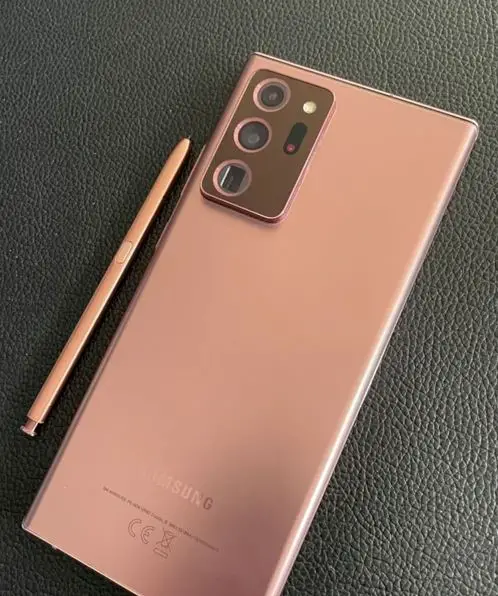
It’s rounded enough not to be considered sharp-edged, but when you hold it you can feel one of the corners in the ball of your hand far more than with the S-Class. Sony had to struggle with this problem with its intentionally angular designs, and Samsung didn’t find a perfect solution for it either.
This also applies to a small extent to the lateral transition from glass to metal and back to glass. If you run your finger over it, you will notice a hint of sharp edges – again this is not bad or even dangerous, at a price well above 1000 euros such a minimal flaw is simply more noticeable than with an entry-level device. The back is more annoying. Although the manufacturer Samsung uses high-quality aluminum here and bathes the material in our test device in an unusual pink-colored bronze tone, tapping the metal with your finger will result in a cheap-looking, hollow tone, at least in the middle of the device.
That just seems out of place for such an expensive smartphone and doesn’t match the otherwise very high-quality exterior and the perfect build quality. Another shortcoming of the back: It is very slippery, especially with dry fingers. At least fingerprints don’t stick to it.
Samsung Galaxy Note 20 Ultra: Screen
Samsung Galaxy Note 20 Ultra: Our Rating for Screen = 9.2/10
The display of the Samsung Galaxy Note 20 Ultra measures 6.9 inches diagonally – i.e. almost as much as a tablet, but with a smaller housing size, which in relation to this is “only” 165 × 77 millimeters and not much more than 200 grams . The resolution is 3088 × 1440 pixels and is crisp.
Thanks to OLED technology, the display of the screen is excellent in terms of contrast, color and viewing angle stability. The brightness is also unparalleled, with over 900 cd/m² measured in automatic mode, Samsung once again shows who the OLED champion is. Because in addition to such outstanding values, the panel scores with HDR10+ and 120 Hertz playback – impressive.
However, there is still a shortcoming here: The high refresh rate is only possible if the display shows a maximum of Full HD+, but not with full WQHD resolution.Samsung Galaxy S20 Ultra 5G (test report) whose screen is similarly grandiose. What is new, however, is the variable refresh rate. In theory, it not only allows you to choose between fixed values such as 60, 90 or 120 Hz, but everything between 10 and 120 Hz. Currently, however, this only works with 10, 30, 60 and 120 Hz and then helps to save electricity, for example the image viewing and automatically adjusted down to 10 Hz. However, the display glass is new to the Note 20 Ultra.
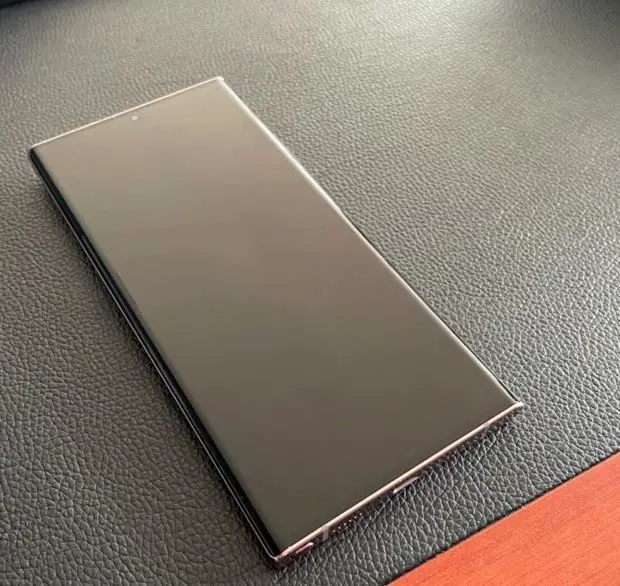
Samsung relies on the new Corning Gorilla Glass Victus, which replaces Gorilla Glass 6. Victus is said to be more resistant to scratches than its predecessor, and Corning also promises that the glass will survive a fall from 2 meters onto a hard, smooth surface. We didn’t want to make a drop test with our device, but Youtuber JerryRigEverything has already carried out tests with the Note 20 Ultra.
He didn’t notice any improvement in scratch resistance compared to Gorilla Glass 6, instead Victus seems to be very vulnerable to fire. When trying to damage the display with a lighter, the surface turned black-green and never recovered. Usually only a few bright spots remain after such a lighter attack. However, since users are unlikely to expose their expensive treasure to an open flame, the many positive aspects of the Note 20 Ultra panel clearly outweigh the negative.
Samsung Galaxy Note 20 Ultra: Camera
Samsung Galaxy Note 20 Ultra: Our Rating for Camera = 8.5/10
Turning the Note 20 Ultra upside down, you can’t miss the large cluster of three cameras. But why are the camera lenses so big? The answer is: It’s all about the zoom. In the Note 20 Ultra, Samsung has installed an even more powerful telephoto lens than in the S20 Ultra with a five-fold instead of four-fold optical magnification. This also needs space in the tricky “periscope” design.
If you value good zoom photos, you should be happy about Samsung’s decision: the Note 20 Ultra delivers excellent photo quality with a five to tenfold magnification. At maximum magnification, the differences to the Note 20 become clear. The Ultra was able to keep up with the best cell phones in the cell phone zoom test 2020.
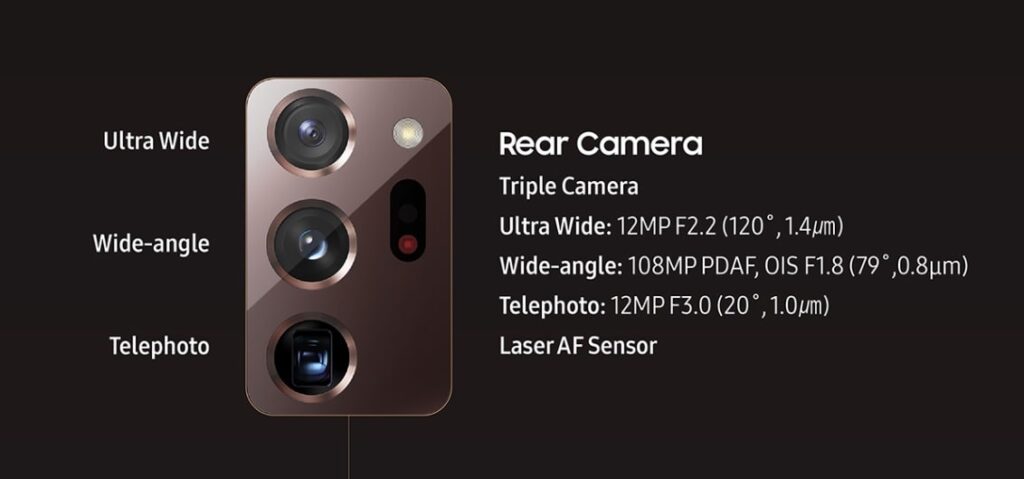 Image Credit: Samsung
Image Credit: SamsungLike the S20 Ultra, the main camera has a gigantic 108 megapixels. An advantage over the S20 series: Samsung has installed a laser-based autofocus in the Ultra. Where the S20 Ultra often took a long time to focus the image, especially with telephoto shots, the Note 20 Ultra has no problems with fast focusing. A 12-megapixel ultra-wide-angle lens is used as the third lens, as well as a good 10-megapixel front camera – both already known from the S20. The Ultra is one of the top devices in the selfie test .
Samsung Galaxy Note 20 Ultra: The S Pen
Samsung Galaxy Note 20 Ultra: Our Rating for S Pen = 8.4/10
In addition to the nimbus of the exclusive business device, one argument in particular speaks in favor of the Note series: the display pen embedded in the housing, with which you can draw, write, operate the device or even control it remotely, for example during a PowerPoint presentation.
The new S-Pen is faster: With a response time of just 9 milliseconds, it comes closer to the feeling of natural writing. This impression is supported in practice by realistic pencil scratching noises. Notes can be automatically synchronized with Microsoft’s digital notepad “OneNote”. And you can include PDF files in notes. The color of the pen matches that of the case.
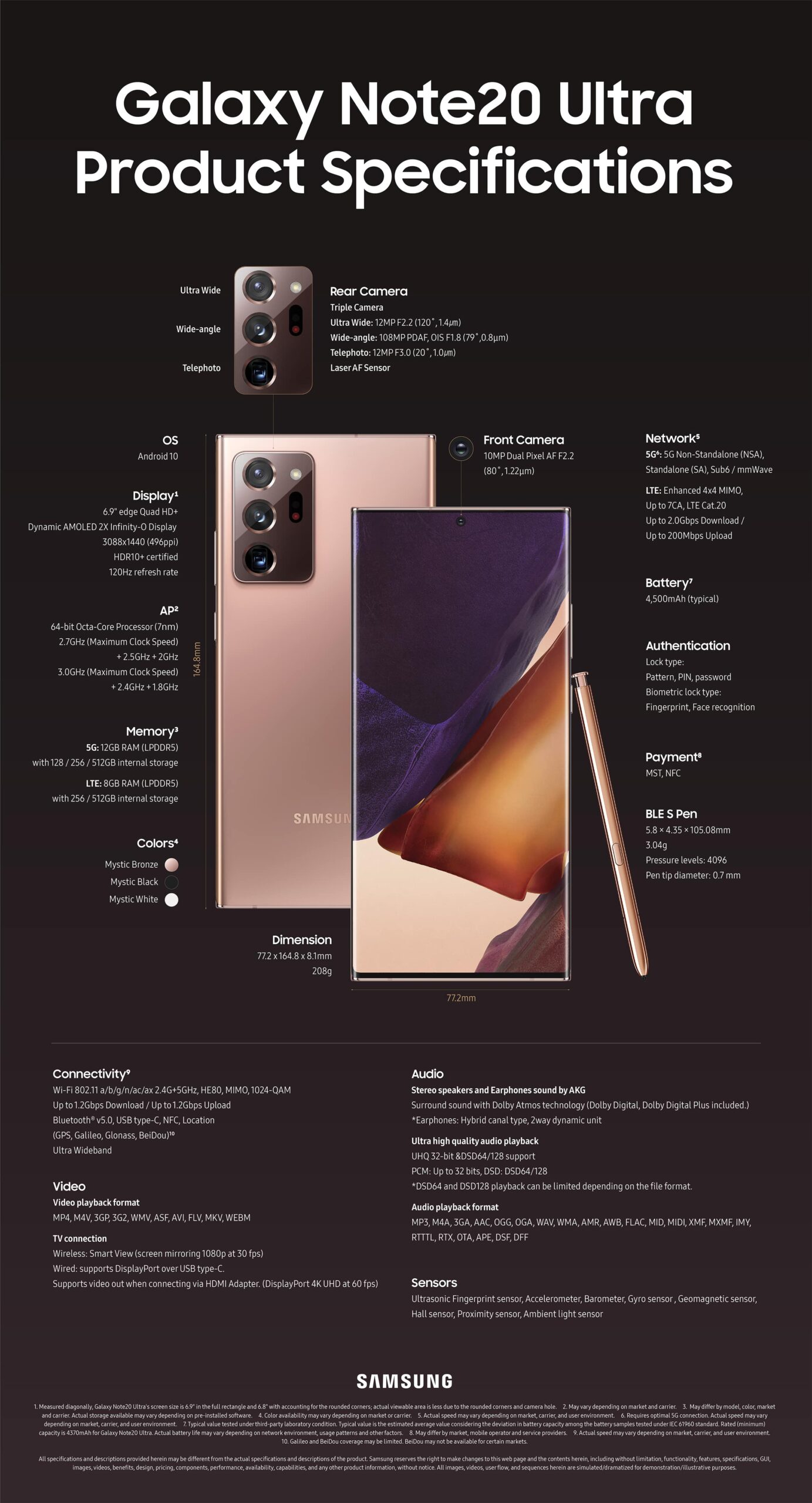 Image Credit: Samsung
Image Credit: SamsungSamsung Galaxy Note 20 Ultra: Conclusion
The Samsung Galaxy Note 20 Ultra is a classy piece with a lot of power. The integrated pen reacts faster than before. The huge display is top notch. The fact that the maximum resolution is not available at 120 Hertz is bearable in everyday life.
The speed is great “despite” Exynos processor. The camera was not able to use its zoom power under laboratory conditions and the combining of pixels was not convincing under all conditions. In everyday life, the normal Note 20 is at least equal and sometimes even significantly better. It’s also much handier and less bulky than the glass Note 20 Ultra. On paper, however, the Ultra clearly wins the duel.
Current Best Price on Amazon: $875.00

